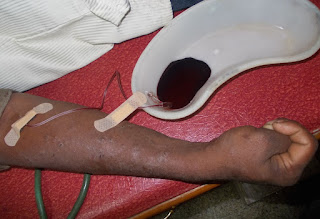Ayurvedic tips to overcome Acne problems
Although Acne is more common in teenage due to hormonal changes in the body, sometimes it can continue even in adulthood which can be distressing. Yuvanapidika (Yuvana meaning youth and Pidika meaning skin eruptions) is the Ayurvedic name for pimples / acne. During puberty or menopause due to the influence of hormones, the oil secreting glands called sebaceous glands become more active secreting sebum in excess. This excessive sebum clogs the skin pores leading to the formation of acne. Sometimes pimples are not only painful but they leave behind scars. Causes of Acne Acne can occur due to many reasons - 1. Hormonal changes as in puberty, PCOD, menopause, etc. 2. Excess oiliness of skin caused due to excess sebum production or application of oil based creams 3. Use of aggressive chemical products 4. Bacteria or infections 5. Certain medications like steroids, oral contraceptive pills, etc. 6. Stress Ayurvedic approach Mostly people opt to topical creams or l...
